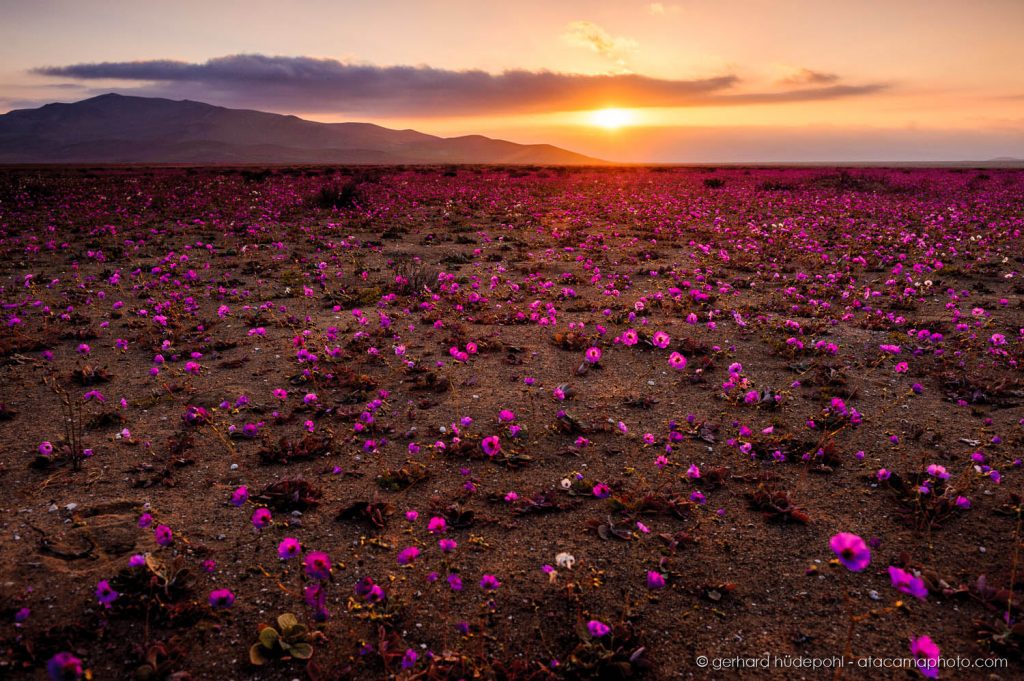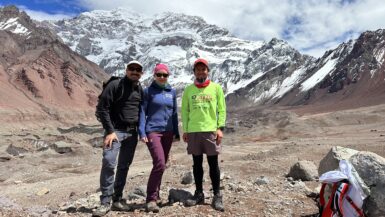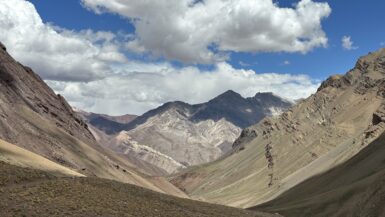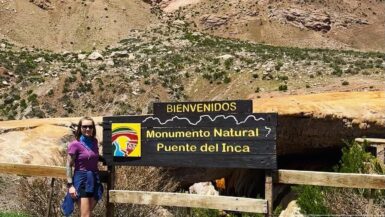Researching about my next adventure
Just 60m lower than Aconcagua, mighty Ojos del Salado @ 6,893 m- the second highest peak in South America, the highest volcano on the planet, and the second highest mountain on earth outside the Himalayas.
The magical volcano is located in a very unique desert environment, on the edge of the Atacama Desert, classified as the oldest driest place on Earth; according to scientists the Atacama has been a desert for over three million years. According to CONDÉ NAST TRAVELER (2015) there are places in the Atacama Desert that have never received any rainfall, and yet, you can find there intense blue-green lagoons, some as salty as the Dead Sea, contrasting with bare, yellow-orange colours of the desert and snow-capped peaks of volcanoes scattered all around. If you are lucky you can see flamingos, who adopted to survive in this extreme environment, posing distinctive challenges for all inhabitants, including us. While climbing Ojos del Salado, you need to be mentally and physically prepared for the difficulties you might come across during this expedition ranging from extreme heat, cold and strong wind on this high and exposed mountain. The temperatures during the day can reach even up to 40º C, and in the night can fall upto 0º C. Of course higher up it will be much colder, Ojos del Salado due to its altitude, and its geographical location in the Andes and the Atacama desert has truly unique weather and climate. The best time for climbing this beautiful volcan will be the beginning of the year – January until March – without much snow, and yes yes, even though it is the driest place on the Earth, there is still snow there, due to the altitude and low temperatures higher up. Even in the warmest months, temperatures can be as low as as -10°C, and at the summit can drop to -30°C with extreme winds even over 130 km/ph.
Some Interesting Facts about Desierto de Atacama
- A desert bloom – every few years visitors from all over the world can experience the blooming of flowers in the Atacama Desert – it is quite rare to see, apparently this phenomenon only happens every five to seven years when rare heavy rains in the driest place on the planet cause flowers to bloom! Extridonary!

- Astrology Hotspot – a great place for astrologers, and anyone interesting in observation of the sky, due to the lack of human life, lack of pollution, and almost no rainfall sky is cloud free, which makes the stars apparently shine like nowhere else on earth (can’t wait to see it). Just imagine a full moon, the Milky Way Galaxy and stargazing in the middle of nowhere!! There is a Atacama Large Millimeter/submillimeter Array observatory which is open for tourists once a week.
- Read more: ALMA: In search of our cosmic origins.
- The Guerra del Pacífico (War of the Pacific) – as the area is rich in minerals for example it has the largest supply of sodium nitrate in the world, also known as Chile saltpeter, used for producing fertilisers, thermal energy storage, as well as food additive and preservative, and also used in explosives. There are many abandoned mining towns in the desert. The War of the Pacific between Chile, Peru and Bolivia took place in 1879-83. Now Chile has a control of the entire region and it is Chile’s one of the main sources of wealth.
- The Atacama Desert Mummies and Mummified Parrots – The Chinchorro mummies are older than Egyptians, pre-dating them by 2,000 years. The Chinchorro people are the first known in the world to mummify their dead, starting around 5,000 BCE (BBC Travel, 2022).
You can see the Chinchorro Mummies in The Azapa San Miguel Museum in Arica , however at the moment only a small percentage of mummies is on display and a new archaeological museum is under construction. Arica town is located in northern Chile, very close to the border with Peru. It is a port city, known for its surfing beaches,
Arica is a port city in northern Chile, known for its surfing beaches. Located close to Atacama Desert and in the heart of the Lauca National Park, apparently the driest city on the planet, even when it is cloudy it doesn’t rain. I haven’t realised how massive Chile is until I’ve started researching places and looking at the map, it takes a very long time to travel from one place to another
According to researchers people from an ancient civilization transported exotic birds such as parrots and macaws from the Amazonian rainforests over the Andes,there were often kept to produce feathers as clothes containing tropical feathers were symbols of power, prestige and high status in the pre-Columbian times. Many parrots were find mummified with open mouths and their tongues sticking out, or with their wings spread as if they were flying.
Chile’s Atacama Desert covers over 1,000 km in the northern part of the country bordering with Argentina and Bolivia and running upto the border with Peru. It is a mystical destination, full of secrets and untold stories, buried under the dry, cracked earth and sand dunes. I can’t wait to see this alluring wonderland, and hopefully stand on the top of Ojos del Salado.






[…] Read more: El Ojos del Salado and Atacama Desert […]